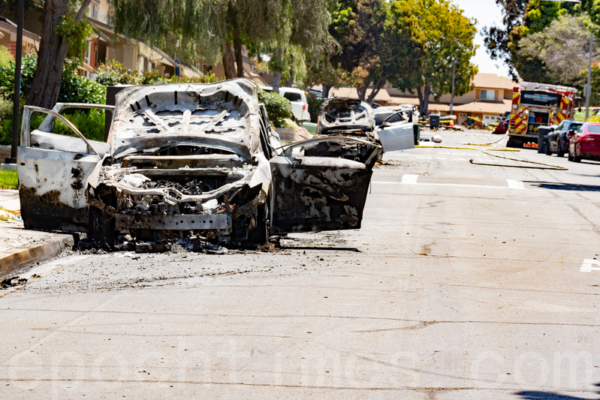In a tragic incident on Thursday in San Diego, California, investigators said that multiple factors may have contributed to the crash of a small private plane in a military housing area. These factors included runway lights being out, malfunctioning weather alert systems, heavy fog, and the pilot’s decision to continue landing in adverse conditions. The crash resulted in the loss of all six people on board the aircraft.
The Cessna 550 Citation business jet crashed before 4 a.m. local time with six individuals onboard, including a music industry executive and five others. Near the United States Navy housing area where the accident occurred, there were no fatalities, but eight people received treatment for injuries caused by inhaling smoke from the crash and sustained non-life-threatening injuries.
According to a recording from LiveATC.net, the pilot acknowledged that the weather conditions for landing were less than ideal. During a conversation with an air traffic controller from the Federal Aviation Administration (FAA), they debated whether to divert to another airport due to visibility concerns.
The FAA had previously issued a formal notice to the pilot, stating that the runway lights at Montgomery-Gibbs Executive Airport in San Diego were inoperable. It remains unclear whether the pilot had reviewed this notice. Although the pilot did not discuss the issue of extinguished runway lights with the control tower, they were aware that the airport’s weather alert system was not functioning. Ultimately, the pilot decided to proceed with the planned landing at this airport, despite the challenges.
Speaking to the air traffic controller, the pilot said, “It sounds a bit ominous, but we’ll give it a shot.” The plane later crashed approximately 2 miles (3.22 kilometers) away from the airport.
Among the deceased were music talent agent Dave Shapiro, two unnamed employees from the music talent company “Sound Talent Group” that he co-founded, and a former drummer from the metal band “The Devil Wears Prada.” Shapiro, aged 42, held a pilot’s license and was registered as the owner of the aircraft.
The small plane departed from Teterboro Airport in New Jersey around 11:15 p.m. local time on Wednesday, made a stop in Wichita, Kansas for fuel and stayed for about an hour, before continuing towards San Diego. This overnight arrangement violated federal regulations regarding crew rest for commercial flights but did not apply to private aircraft.
Dan Eddy, the Assistant Chief of the San Diego Fire Department, stated during a press conference on Thursday that the crash occurred in heavy fog, where “you could hardly see anything in front of you.”
Jeff Guzzetti, a former aircraft accident investigator with the National Transportation Safety Board and the FAA, suggested that heavy fog combined with pilot fatigue after flying overnight was likely the primary factors leading to the accident.
He emphasized that pilots must review notices issued by the FAA known as “Notices to Airmen,” which alert them to any issues of concern, such as malfunctioning runway lights. Guzzetti pointed out that pilots have easy access to this information and must obtain it before any flight operations.
During the descent, the pilot may have also noticed the darkened runway lights. Guzzetti explained that in the absence of lights, the standard operating procedure would be to climb and divert to another airport.

